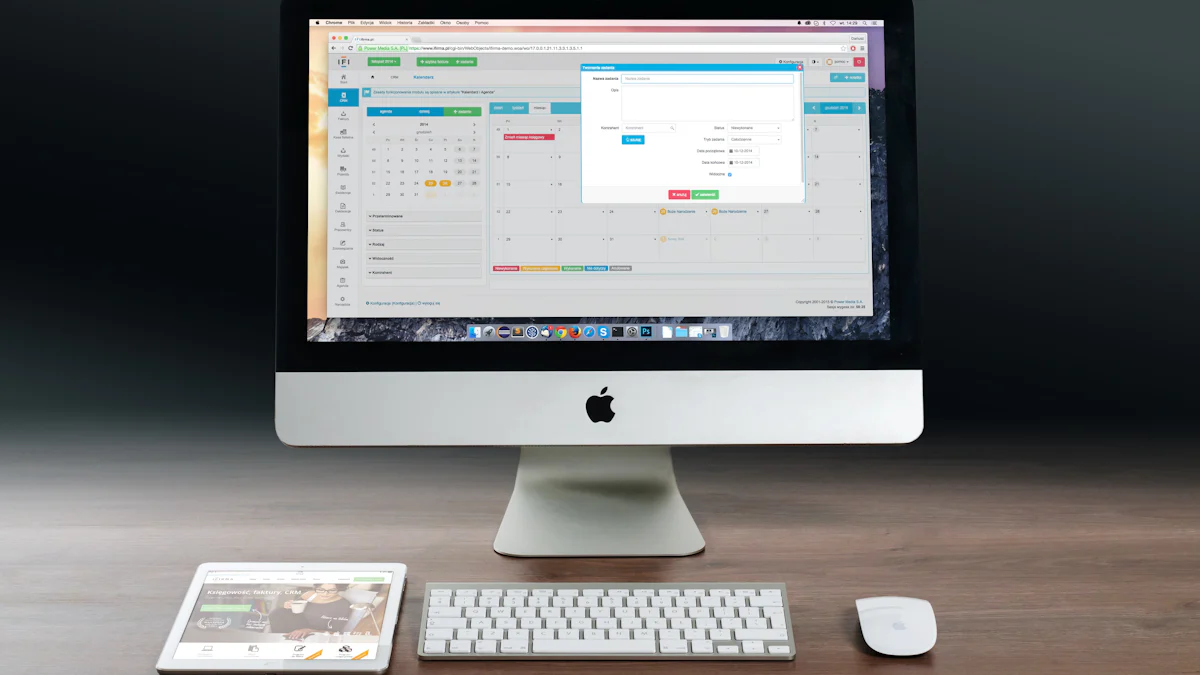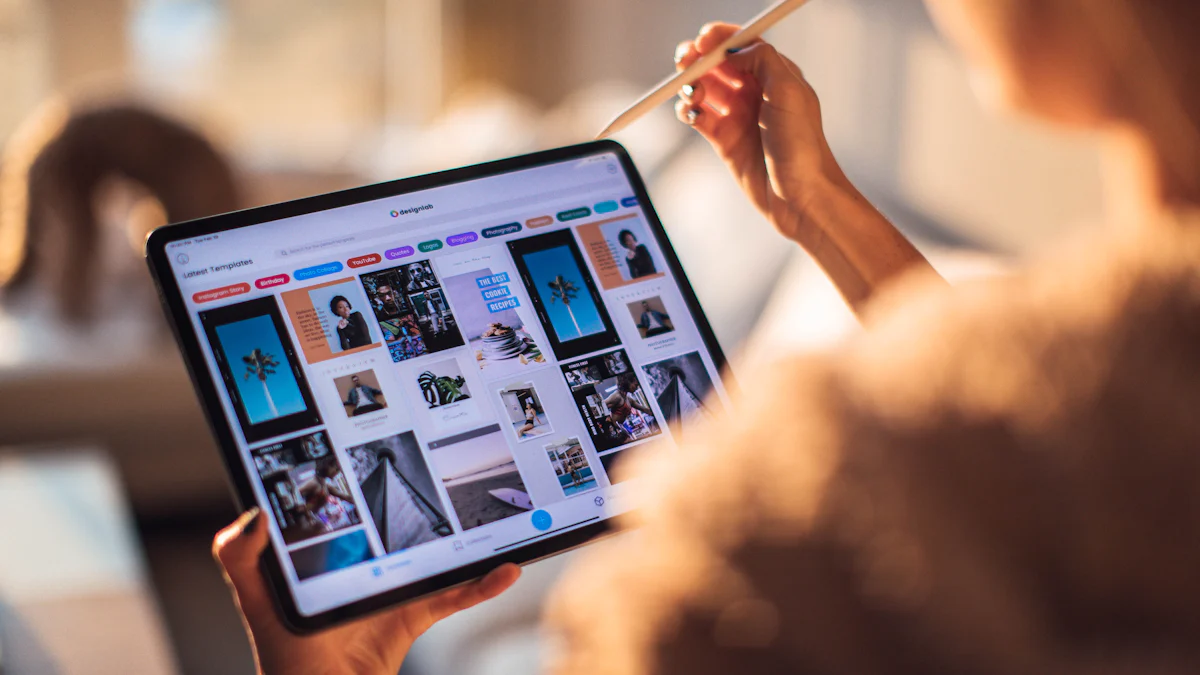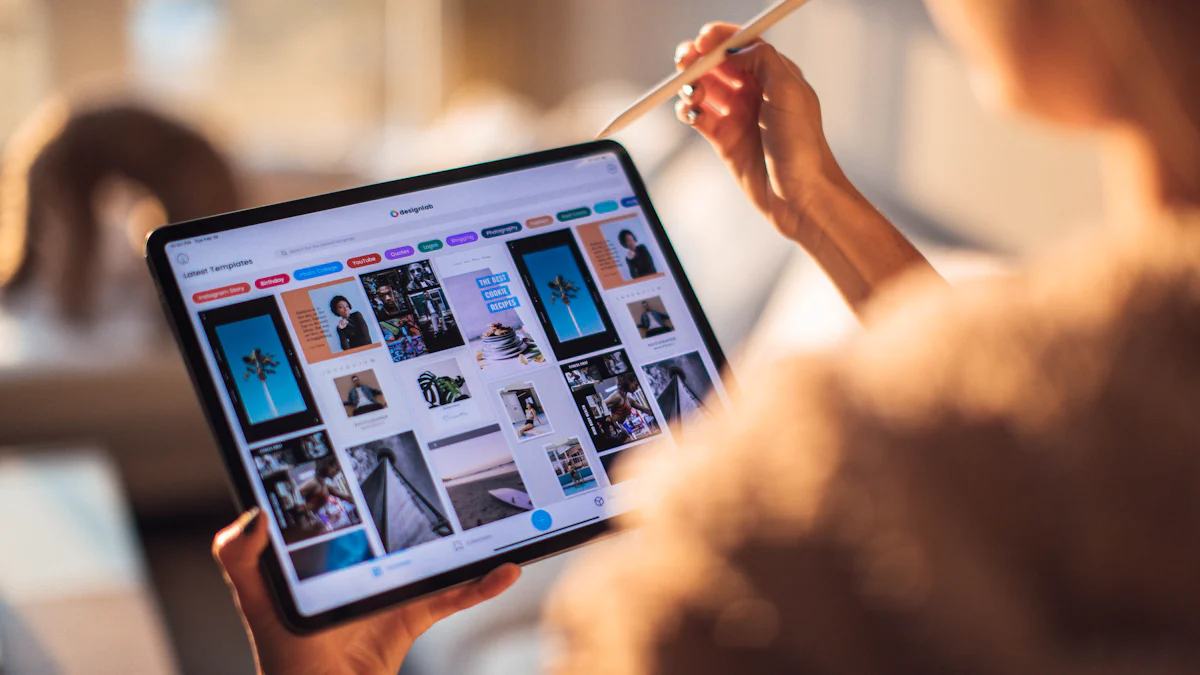No Products in the Cart

The debate between the best touchscreen mini computers on the market and traditional desktops continues to gain traction. Choosing the right type of computer depends on individual needs and preferences. The market for the best touchscreen mini computers on the market has seen significant growth, driven by technological advancements and the demand for more accessible user interfaces. Despite their compact size, these devices pack powerful hardware setups, making them suitable for various tasks. Traditional desktops remain relevant due to their superior performance and upgradeability. Understanding the differences can help users make informed decisions.

Touch screen mini computers offer a compact and versatile computing solution. These devices often feature Intel Celeron J4125 processors, which provide adequate performance for everyday tasks. Many models come with 8GB DDR4 RAM and 128GB EMMC storage, ensuring smooth operation for most applications.
Key features include:
HD touch screens ranging from 5.5 inches to 10.1 inches
Integrated WiFi 6.0 and Bluetooth 5.2 for robust connectivity
Multiple ports, including HDMI, USB Type-C, and Ethernet
Energy-efficient design that consumes significantly less power than traditional desktops
Touch screen mini computers excel in various scenarios due to their portability and user-friendly interfaces. Common uses include:
Light office work such as document editing and email management
4K video playback for entertainment purposes
Online education platforms requiring interactive capabilities
Remote desktop control for managing other systems or smart home devices
Traditional desktops remain a staple in both professional and personal computing environments. These machines typically feature powerful components such as high-performance CPUs, ample RAM, and extensive storage options.
Key features include:
High-end processors like Intel Core i7 or AMD Ryzen series
Expandable memory options up to 64GB or more
Large storage capacities with SSDs and HDDs
Multiple expansion slots for graphics cards, sound cards, or additional peripherals
Traditional desktops offer unparalleled performance, making them suitable for demanding tasks. Common uses include:
Intensive applications like graphic design, video editing, and software development
Gaming setups requiring high processing power and advanced graphics capabilities
Business environments needing reliable performance for multitasking operations
Home offices where space is not a primary concern but performance is crucial
Touch screen mini computers offer several benefits:
Portability: These devices are compact and lightweight, making them easy to carry around.
Space Efficiency: The small form factor allows users to save desk space.
Energy Efficiency: Mini PCs consume significantly less power compared to traditional desktops, which results in lower energy bills.
User-Friendly Interface: The touch-sensitive displays provide an intuitive way to interact with the device, catering to creative endeavors and interactive learning.
Affordability: Mini PCs generally come with a lower price tag, making them an economical choice for various computing tasks.
Despite their advantages, touch screen mini computers have some drawbacks:
Limited Processing Power: These devices often use laptop-grade CPUs, which may not perform as well as desktop CPUs for intensive tasks.
Restricted Upgrade Options: Mini PCs usually offer limited or zero upgrade options, reducing their long-term flexibility.
Reduced Storage Capacity: Many models come with smaller storage capacities compared to traditional desktops.
Screen Size Limitations: The smaller screens may not be ideal for users who require larger displays for detailed work.
Traditional desktops bring several strengths to the table:
High Performance: Equipped with powerful processors like Intel Core i7 or AMD Ryzen series, these machines handle demanding applications efficiently.
Expandability: Users can easily upgrade components such as RAM, storage drives, and graphics cards. This makes traditional desktops highly customizable.
Superior Graphics Capabilities: Ideal for gaming setups and graphic-intensive tasks like video editing and 3D rendering.
Reliability in Multitasking: Traditional desktops excel in environments that require robust multitasking capabilities.
However, traditional desktops also have their downsides:
Bulkiness and Weight: These machines take up more space and are not portable. This makes them less suitable for users needing mobility.
Higher Energy Consumption: Traditional desktops consume more power than mini PCs. This leads to higher electricity costs over time.
Initial Cost Investment: While offering high performance, traditional desktops often come with a higher initial investment compared to mini PCs.
By understanding these pros and cons, users can better determine which type of computer aligns with their specific needs.
Touch screen mini computers often feature laptop-grade CPUs. These processors, such as the Intel Celeron J4125, provide adequate performance for everyday tasks. However, traditional desktops usually house more powerful CPUs like the Intel Core i7 or AMD Ryzen series. These high-end processors handle intensive applications with ease.
Traditional desktops excel in multitasking environments. The ability to expand memory up to 64GB or more allows for smooth operation of multiple applications simultaneously. Touch screen mini computers, with their limited RAM options, may struggle with heavy multitasking demands.
Touch screen mini computers offer a compact form factor. These devices are lightweight and easy to transport. Traditional desktops, on the other hand, are bulkier and heavier. This makes them less suitable for users who need mobility.
Mini PCs save significant desk space due to their small size. Users can place these devices in tight spaces without compromising functionality. Traditional desktops require more room because of their larger chassis and additional peripherals.
Touch screen mini computers provide an intuitive user interface through touch-sensitive displays. This feature enhances interactive learning and creative tasks. However, touch screens consume more energy compared to conventional desktop monitors.
"PC touch screen technology consumes more energy compared to conventional desktop computers." - faytech.us
Traditional desktops rely on keyboard and mouse interaction for navigation. This method offers precision and efficiency for tasks like graphic design or software development. While touch screens offer convenience, many professional applications still benefit from traditional input methods.
By examining these detailed comparisons, users can better understand which type of computer aligns with their specific needs in terms of performance, portability, usability, and space requirements.
Touch screen mini computers generally require a lower initial investment compared to traditional desktops. These devices often come with affordable price tags, making them accessible for budget-conscious consumers. The compact design and integrated components contribute to the cost-effectiveness of mini PCs.
Traditional desktops, on the other hand, typically involve a higher upfront cost. High-performance CPUs, expansive memory options, and advanced graphics capabilities drive up the price. The need for additional peripherals like monitors, keyboards, and mice further increases the initial expenditure.
Touch screen mini computers offer significant long-term value due to their energy-efficient design. These devices consume considerably less power than traditional desktops, resulting in lower electricity bills over time. The portability of mini PCs also adds value by allowing users to easily relocate their workstations as needed.
However, traditional desktops provide substantial long-term benefits through their upgradeability. Users can enhance performance by upgrading components such as RAM, storage drives, and graphics cards. This flexibility extends the lifespan of traditional desktops and ensures they remain relevant for demanding tasks.
Manufacturers continuously innovate touchscreen technologies to improve energy efficiency and design (goleminipc.com). Despite these advancements, touch screen technology still consumes more energy compared to conventional desktop monitors (faytech.us). Therefore, users must weigh the trade-offs between immediate affordability and potential long-term costs when choosing between touch screen mini computers and traditional desktops.
By considering both initial investment and long-term value, users can make informed decisions that align with their financial goals and computing needs.

The HiGole Mini PC stands out as a top choice among the best touchscreen mini computers on the market. This device features an Intel Celeron J4125 processor, 8GB DDR4 RAM, and 128GB EMMC storage. The compact design includes a 5.5-inch HD touch screen, making it highly portable and user-friendly. Integrated WiFi 6.0 and Bluetooth 5.2 ensure robust connectivity options.
Key highlights of the HiGole Mini PC:
Compact form factor with a touch-sensitive display
Energy-efficient performance
Multiple ports for versatile connectivity
Ideal for light office work and multimedia consumption
Several other models also rank among the best touchscreen mini computers on the market:
ASUS VivoMini VC66-C2
Features Intel Core i3 or i5 processors
Offers up to 32GB RAM and multiple storage options
Includes HDMI, USB Type-C, and Ethernet ports
Intel NUC10i7FNK
Equipped with Intel Core i7 processor
Supports up to 64GB RAM
Compact design with multiple connectivity options
Lenovo ThinkCentre M90n Nano
Powered by Intel Core i5 or i7 processors
Up to 16GB RAM and SSD storage options
Ultra-portable with robust security features
These models offer various configurations to meet different user needs, from basic computing tasks to more demanding applications.
Traditional desktops continue to dominate in terms of performance and expandability. Some popular models include:
Dell XPS Tower Special Edition
Features Intel Core i7 or AMD Ryzen processors
Expandable memory up to 64GB
Multiple expansion slots for graphics cards and other peripherals
HP Omen Obelisk
Equipped with high-performance CPUs like Intel Core i9 or AMD Ryzen series
Advanced cooling systems for optimal performance during intensive tasks
Customizable components for gaming enthusiasts
Apple iMac Pro
Powered by Intel Xeon W processors
Up to 256GB ECC memory
Retina 5K display offering superior visual quality
These traditional desktops provide exceptional performance for professional applications such as graphic design, video editing, and software development.
For users seeking cost-effective solutions without compromising on performance, several budget-friendly traditional desktops are available:
Acer Aspire TC Series
Features AMD Ryzen or Intel Core processors
Expandable memory options up to 32GB
Affordable pricing with reliable performance
Lenovo IdeaCentre 510A
Equipped with AMD Ryzen or Intel Core CPUs
Supports up to 16GB RAM
Compact design suitable for home offices
HP Pavilion Desktop TP01 Series
– Offers configurations with AMD Ryzen or Intel Core processors
– Expandable storage options including SSDs
– Competitive pricing ideal for everyday computing tasks
These budget options provide excellent value while maintaining adequate performance levels suitable for various computing needs.
The blog compared touch screen mini computers and traditional desktops, highlighting their unique features and applications. Touch screen mini computers offer portability, energy efficiency, and user-friendly interfaces. Traditional desktops provide high performance, expandability, and superior graphics capabilities.
For users needing mobility or space-saving solutions, touch screen mini computers suit best. For those requiring powerful performance and upgrade options, traditional desktops remain ideal.
Consider specific needs and preferences when choosing a computer type. Share thoughts or experiences in the comments to help others make informed decisions.